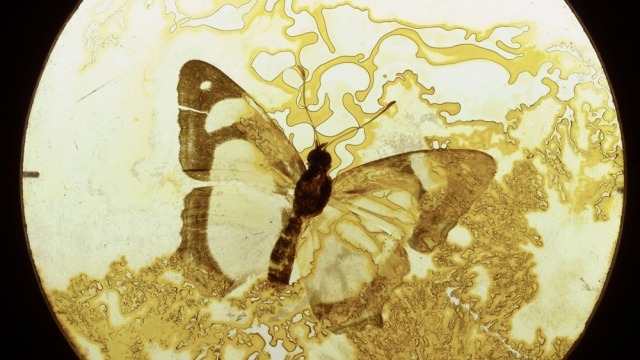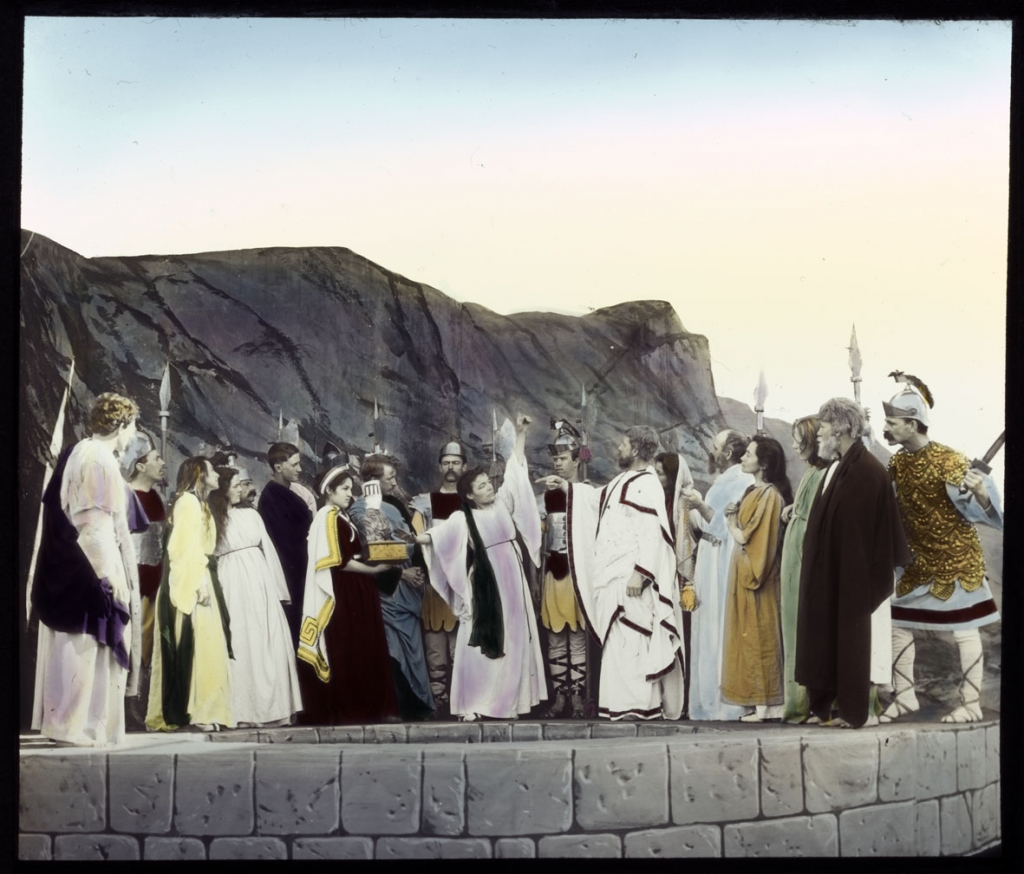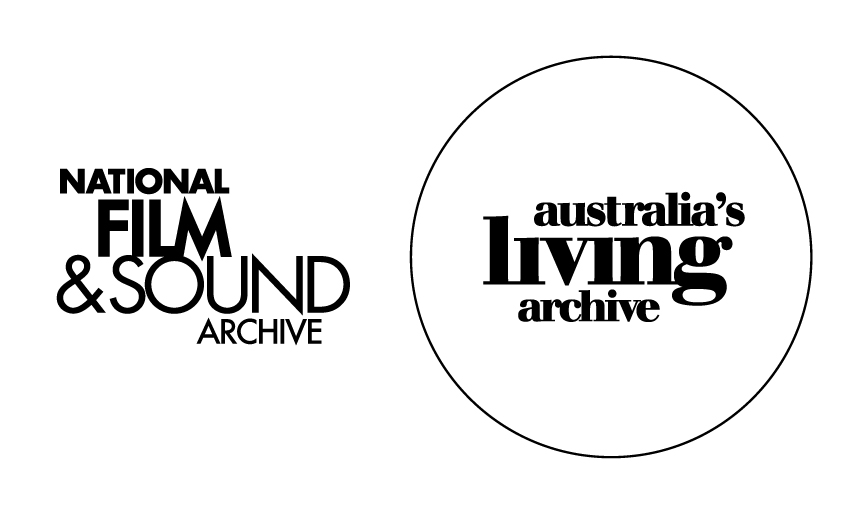The Projected Image Heritage of Australia and New Zealand
Date & time
Location
SHARE

The page for The Projected Image Heritage of Australia and New Zealand has moved. Click here to view the new page
Please ‘like’ and post to our Facebook page at http://www.facebook.com/ProjectedImageSymposium EN-US"> so we can build an ongoing network.
A five minute video excerpt from Professor Ian Edwards and Margery Edwards’ magic lantern show is available here.
Notes from the 14 December 2012 Symposium The Projected Image Heritage of Australia and New Zealand. Apologies for any inaccuracies or missed out bits. Please correct or add your additional comments.
Professor Paul Pickering from the Research School of Humanities and the Arts welcomed us with an overview of the magic lantern as an integral part of colonial society and commerce, and an important part of the imperial project, as well as a metaphor for fraud as well as unstable visions of the future.
Dr Martyn Jolly from the ANU then laid out the extent of the terrain covered by the ‘the projected image’, from early magic-lantern dissolving-view shows to contemporary architectural projection mapping; as well as the new perspectives the ‘slippery image’ of the copied and projected lantern slide can give on our understanding of the archaeology of cultural and media experiences, as well as the history of art, science, and education. For example Charles Ryan’s images of Gallipoli exist both as stereographs in the AWM, and as hand-coloured lantern slides in the NFSA. In many ways an examination of lantern-slides is a missing piece of the puzzle from existing histories of theatre, photography, art, education and media in Australia.
Then Dr Elizabeth Hartrick from the University of Melbourne discussed her experience of being the first person to comprehensively survey the extent of the largely uncatalogued lantern-slide collections in institutions across Australia and New Zealand, as well as to intensively read newspaper and other accounts of the profound impact dissolving-view and lantern-slide performances had on so many Australians and New Zealanders in the nineteenth and twentieth centuries. Her Phd thesis Consuming Illusions: The Magic Lantern in Australia and Aotearoa New Zealand is available from the Melbourne University Library Digital Repository. Elizabeth also mentioned the prior work of the South Australian historian Bob Noye, as well as Professor Ian Edwards.
Itzell Tazzyman, a curator from the National Film and Sound Archive discussed the Archive’s major project of bringing together, digitizing, and putting online the lantern slides in the various disparate parts of their collection, including the lanterns themselves as well as mechanical slides, song slides, theatre slides and the Soldier of the Cross collection. She also showed a short film the NFSA had made describing their collections, the project, and the history of lantern slides.
Shingo Ishikawa, a conservator from the National Film and Sound Archive discussed in fascinating detail his original research into the conservation of slides, his analysis of the extraordinary stability of the colour dyes used, and his treatment for removing sodium sulphate deposits. The research will be presented at the International Council of Museums Committee for Conservation in Wellington in February.
Historian Dr Catherine de Lorenzo, adjunct Research Fellow from UNSW COFA spoke of the use of lantern-slides in early twentieth century lectures about ‘old Sydney’ at the Royal Australian Historical Society by the keen amateur historians Mr G.A. and Mrs Ethel Foster. By re-uniting the surviving scripts with the slides and scrapbooks it becomes clear that the lecturers took the audience through the performed experience of a spatialised, ‘ramble’ through the streets of old Sydney, particularly around the old Devonshire Street Cemetery, now Central Station.
Martin Bush, Research Associate from Museum Victoria, spoke of the 8500 important slides in their collection, many from the David Frances collection, which are currently in the care of senior curators David Dement and Lorenzo Iozzi. He discussed the museum’s project of copying both the lantern-slide image and its mount with associated metadata. He showed extraordinary astronomical orrery slides from the collection, some of which were displayed at Australian Centre for the Moving Image’s Star Voyager exhibition in 2011.
Jan Brazier, curator, History Collections, University of Sydney, spoke of the collections in both the Australian Museum (on behalf of its Manager of Archives and Records Vanessa Finney) and the University of Sydney. The Australian Museum’s collection of twenty to thirty thousand slides, formed from beautiful natural history and microscopic images by scientists such as Anthony Musgrave, Thomas Whiteley, and Ethel King, and used for public lectures in the 1920s, is largely intact — even including the large bound slide registers. Likewise, substantial parts of the University of Sydney’s collections of educational slides are also largely intact and some still have their self-indexing classificatory systems which give an indication of how they were used for lecturing. These collections were formed and accessed by anthropologists like Alfred Radcliffe-Brown and A. P. Elkin, as well as by geologists like Edgeworth David, and botanists. They were largely photographed by a series of laboratory technicians.
Ian Affleck, photography curator from the Australian War Memorial discussed the popular ‘Battle Lectures’ presented by and to returned Diggers in the 1920s, which are still preserved in multiple versions in the AWM. He also showed actual WW1 negatives and the slides derived from them, drawn from the Memorial’s collection of 20,000 negatives and 11,000 lantern-slides. He discussed the technical process of making lantern slides from negatives, and the issues curators encounter with determining the correct orientation. He also discussed natural transparency colour processes such as Paget plates, used by Frank Hurley.
Collector John Hyett discussed the international collectors network, including the Lucerna site (http://www.slides.uni-trier.de/index.php) and the UK Magic Lantern Society that has members from thirty-five countries. He discussed the origins of is passion for the lantern and the formation of his large personal collection. He also discussed his current research into the various magic lantern shows that came through one small Victorian town, Leongatha. In the early twentieth century the shows numbered about ten per year, about half of which originated overseas rather than being Australian, indicating the cosmopolitan nature of projection culture, even in regional Australia.
Lindsay Cox from the Salvation Army Heritage Centre, 69 Bourke Street Melbourne, spoke of the Centre’s substantial collection of slides, it’s extensive displays, and its importance as the site of one of Australia’s first media studios, the Salvation Army Limelight Department, which are now restored.
Professor Ian Edwards and Margery Edwards’ presented a magic lantern show including nineteenth century mechanical slides and twentieth century handcoloured photographic slides.
Professor Scott McQuire, School of Culture and Communication, Melbourne University, discussed contemporary theoretical methodologies such as media archaeology, exemplified by the work of Erkki Huhtamo, Friedrich Kittler, Michel Foucault and Marshall McLuhan, which work across the dominant silos in which visual culture is usually discussed — such as ’pre-cinema’. He also discussed the work of contemporary media practitioners such as Rafael Lozano-Hemmer who explicitly references the history of projection and phantasmagoria, as well as other contemporary media artists working in architectural projection mapping such as Urbanscreen, Seeper and others, who follow on from Krzysztof Wodiczko’s analogue projection work in the 1980s.
Dr Danni Zuvela from Griffith University discussed her ongoing collaborative work with Joel Stern within the NFSA lantern-slide collections, particularly focussing on the lineage of chromatropes through to psychedelia, and the ekphrastic scripts of the lantern lecture, which will result in a performance in 2013. She also discussed the work of the Otherfilm Collective http://otherfilm.org/ which consists of herself, Joel Stern, and Sally Golding, as well as the practice of many other contemporary artists working within live media-event traditions such as Ken Jacobs and Peter Burr.
Round table discussion, chaired by Professor Paul Pickering:
· Professor Jill Matthews announced that she will be convening a conference on ‘History, Cinema, Digital Archives’ in 2014 under the Humanities Research Centre theme, which is Now Showing: Cultures, Judgments, and Research on the Digital Screen.
· There are many Canberra fellowships and scholars programs at the HRC, the AWM, the NFSA, the NAA the NLA and others. These could be coordinated around the theme of Australia and New Zealand’s projected image heritage for 2014. Martyn Jolly will explore this possibility.
· The UNESCO World Day of Audiovisual Heritage http://www.unesco.org/new/en/communication-and-information/access-to-knowledge/archives/world-day-for-audiovisual-heritage/ is 27 October, and it could be a good time to coordinate public programs between Canberra’s national institutions. Fiona Hooton and Gael Newton agreed to investigate this possibility.
· The theme of the 2013 NSW History Week, 7- 15 September is ‘Picture This’. The Victorian History Week runs 20 – 27 October 2013.
· The next Magic Lantern Society Australasian Convention is scheduled for 2014, Elizabeth Hartrick and John Hyett have convened the first two.
· There are already some on-line scholarly forums and resources such as
mso-bidi-font-family:"Courier New";mso-ansi-language:EN-US">o Design and Art of Australia Online, http://www.daao.org.au/
mso-bidi-font-family:"Courier New";mso-ansi-language:EN-US">o Collections Australia Network, http://www.collectionsaustralia.net/
mso-bidi-font-family:"Courier New";mso-ansi-language:EN-US">o Trove
mso-bidi-font-family:"Courier New"">o OCCAMS - Online Cultural Collections Analysis and Management System, Digital Humanities Hub ANU, http://dhh.anu.edu.au/occams
mso-bidi-font-family:"Courier New"">o The Museum, Library and Archive Collection and Research group set up by Geoff Barker on mendeley.com
These could be the basis for a future projects or sub-projects bringing together metadata from different collections and within collections, perhaps searchable with new descriptors. They could also be the basis for an ongoing scholarly network.
· The area of projection is also amenable to a media-rich, refereed scholarly publication with embedded multimedia through a university ePress.
Outcomes:
1. Agreement to set up a scholarly network, initially through Facebook
2. Agreement to explore further events showcasing research and creative practice
October Update:
Colleagues from the Australian National University, the National Film and Sound Archive, the National Museum of Australia, the Australian War Memorial, the National Library of Australia, Melbourne University, Museum Victoria, Griffith University, the College of Fine Arts, Macleay Museum, University of Sydney, the Australian Museum, and Victoria University Wellington are meeting on December 14 at the ANU School of Art to scope future research possibilities into magic lantern slide projection in Australia and New Zealand, but more are welcome!
A highlight of the day will be re-enactments of nineteenth and early twentieth century magic lantern shows by Professor Ian Edwards. However there will also be re-interpretations of the projection experience by contemporary artists, presentations on theoretical and methodological approaches, and reports on lantern slide collections in both big and small institutions. The day will end with a round table discussion of future research directions and potential collaborations or partnerships.














